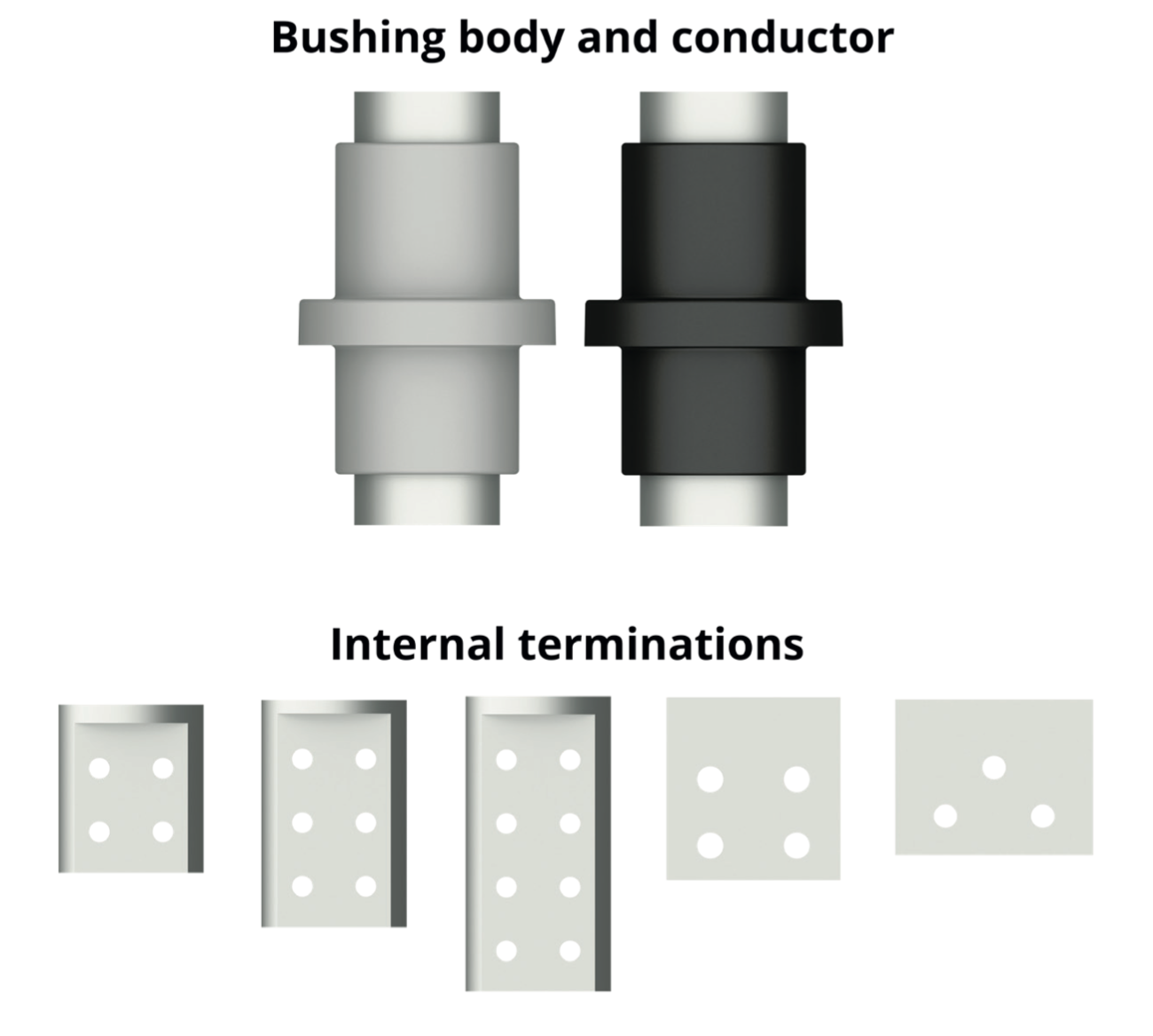Xavier Pinol, Sales Manager EMEA & Asia and Sebastian Miranda, Sales Manager Europe at The H-J Family of Companies, discuss the importance of customizing bushing designs for wind turbine MV transformer applications.
As technology evolves and MV transformers are located in the turbine nacelle next to the generator, it is more important than ever to have the appropriate transformer bushings.
Higher ambient temperatures, higher transformer insulating temperatures, frequent vibrations, smaller spaces, and costly possible repairs translate into the critical choice of the right bushing design.
Fortunately, epoxy resin bushings can be adapted to match each application. The combined efforts of the turbine manufacturer, transformer manufacturer and bushing manufacturer can result in a successful design.
To verify new bushing designs efficiently, it is imperative to have an in-house high voltage test lab capable of handling the numerous tests needed, initially for R&D and later for production.
Here is an overview of potential bushing customizations:
Internal connection from winding to bushing
Smaller size in transformer designs with a higher power has created requirements for custom internal terminations, allowing transformer manufacturers to optimize their designs. Typical terminations can include milled flats, spades, or threaded studs. Dimensions such as length, width and thicknesses can be adjusted. The size, shape, and number of holes could be adapted to the transformer’s internal connection needs, as well as the spade orientation, which could be rotated or even be offset.
External connection from generator to bushing
Turbine manufacturers face several challenges when optimizing the space within the nacelle and defining the optimum connection mechanism with the transformer, such as flexible connectors, fixed copper bars, quick connection boxes, among others. External terminations are easily customized to the application in order to fulfill the space and connection requirements.
Compact dimensions of epoxy body and terminals
In addition to the terminals, the bodies and structure of the epoxy resin bushings are much more compact compared to other insulation options. The casting process allows for maximum creativity in bushing design for all applications.
Easy offering of appropriate current rating
An extensive portfolio of bushing bodies and conductor configurations are available for a wide range of voltage classes and current ratings. Electrical ratings are adjusted to each customer’s particular needs rather than customers adjusting to a fixed portfolio. Low voltage bushing designs range from 30 amps to 10,000 amps and voltages of 1.2kV, 2.5kV, 3.6kV and 5 kV.
Tin, nickel and silver plating available
The standard solution provided for the copper bushing terminations is a coating of tin plating. It provides a good protection layer against corrosion, while featuring a better contact surface. Another available coating solution would be nickel plating, which not only provides a good corrosion resistance but also wear resistance. Finally, bushing terminations can be silver plated, which enhances electrical conductivity while still providing corrosion resistance.
Epoxy resin formulations available for indoor and outdoor exposure.
Our proprietary epoxy materials are designed and formulated in-house for both indoor and outdoor applications.
Ability to provide designs for 105C, 120C and 155C insulating systems
Epoxy formulations for different temperatures, including one material suitable for high-temperature applications up to 155°C. Ideal for transformers installed in the nacelle, where the ambient temperature tends to be high.
Sealing options according to transformer and application needs
To fulfill different transformer sealing designs, bushings are available with options for flat gasket surfaces, gasket retaining grooves or flat gasket surfaces suitable for use with a machined tank surface with O-ring seals.
Installation clamp options
Compatible with various insulating fluids like mineral oil, natural esters and synthetic esters
Epoxy bushings are compatible with the range of fluids used in current renewable applications.
















